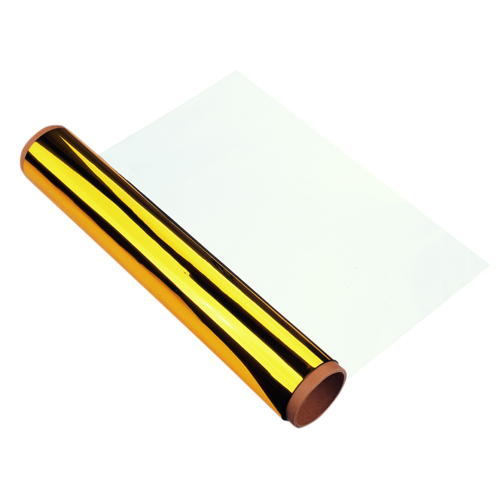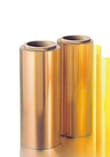PIT1N-ALUM | 1mil Polyimide (Kapton) Film with Sputtered Aluminized Coating
- 1 mil polyimide film
- Sputtered Aluminized Coating
- >6000V breakdown voltage
Product Description
CAPLINQ Linqstat PIT1N-Alum Series is a high performance, high-temperature resistant aluminized polyimide film, formed by sputtering aluminum onto polyimide using an aluminum vacuum deposition method. This combination of materials allows that one side is an insulation side and the other is conductive.
CAPLINQ Linqstat PIT1N-Alum Series combines these two materials to give a very heat resistant, mechanically and chemically stable, radiation-resistant, and self-extinguishing product that has very high thermal conductivity and EMI shielding.
CAPLINQ Linqstat PIT1N-Alum Series is a used in a number of applications, including as a first surface mirror for multilayer insulation (MLI) blankets, EMI shielding, electromagnetic shielding tape and flexible etching wire.
Technical Specifications
| General Properties | |||||
| Adhesive Layer Adhesive Layer A layer that is applied to one surface or both to bind items together and resist their separation | None | ||||
| Chemistry Type | Polyimide | ||||
| Color Color The color | Amber | ||||
| Film Thickness Film Thickness Film thickness is the thickness of a backing film without taking into account any coatings or adhesive layers. It is measured in micron and the conversion factor to mil is 0.039. | 25.4 µm | ||||
| Special Layer | Sputtered Aluminum Coating | ||||
| Special Layer Thickness | 0.07 - 0.1 μm | ||||
| Total Thickness Total Thickness Total thickness is taking into account all the films, coatings, adhesives, release liners and special layers and is the maximum thickness of a film or tape. | 25.5 μm | ||||
| Electrical Properties | |||||
| Breakdown Voltage Breakdown Voltage Breakdown voltage is the minimum voltage necessary to force an insulator to conduct some amount of electricity. It is the point at which a material ceases to be an insulator and becomes a resistor that conducts electricity at some proportion of the total current. After dielectric breakdown, the material may or may not behave as an insulator any more because of the molecular structure alteration. The current flow tend to create a localised puncture that totally alters the dielectric properties of the material. This electrical property is thickness dependent and is the maximum amount of voltage that a dielectric material can withstand before breaking down. The breakdown voltage is calculated by multiplying the dielectric strength of the material times the thickness of the film. | >6000 V | ||||
| Dielectric Strength Dielectric Strength Dielectric strength is measured in kV per mm and is calculated by the Breakdown voltage divided by the thickness of the tested material. Those two properties go hand in hand and while Breakdown voltage is always thickness dependent, dielectric strength is a general material property. As an example, the dielectric strength of Polyimide is 236 kV/mm. If we place 1mm of Polyimide between two electrodes, it will act as an insulator until the voltage between the electrodes reaches 236 kV. At this point it will start acting as a good conductor, causing sparks, potential punctures and current flow. | 236 kV/mm | ||||
| Volume Resistivity Volume Resistivity Volume resistivity, also called volume resistance, bulk resistance or bulk resistivity is a thickness dependent measurement of the resistivity of a material perpendicular to the plane of the surface. | 1.0x1013 Ohms⋅cm | ||||
| |||||
| |||||
| Thermal Properties | |||||
| Temperature Resistance Temperature Resistance Temperature resistance is the maximum temperature that the material or product can withstand for a period of time. The temperatures listed should be considered as guidelines for an operating temperature of about 30 minutes. Typically, the material can withstand much longer times at temperatures about 20°C lower and can withstand much higher temperatures for short, intermittent times. | 400 ˚C | ||||
| Other Properties | |||||
| RoHS Compliant RoHS Compliant RoHS is a product level compliance based on a European Union Directive which restricts the Use of certain Hazardous Substances in Electrical and Electronic Equipment (RoHS). Products compliant with this directive do not exceed the allowable amounts of the following restricted materials: lead, mercury, cadmium, hexavalent chromium, polybrominated biphenyls (PBB) and polybrominated diphenyl ethers (PBDE), with some limited exemptions | Yes | ||||






